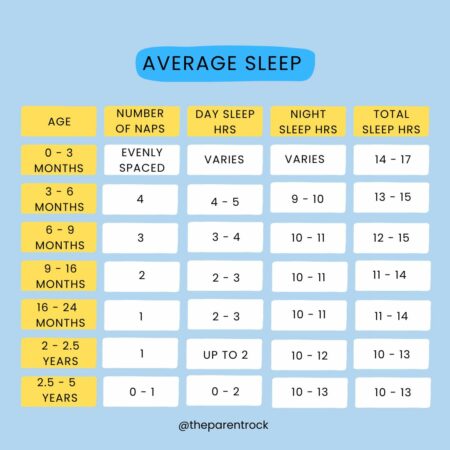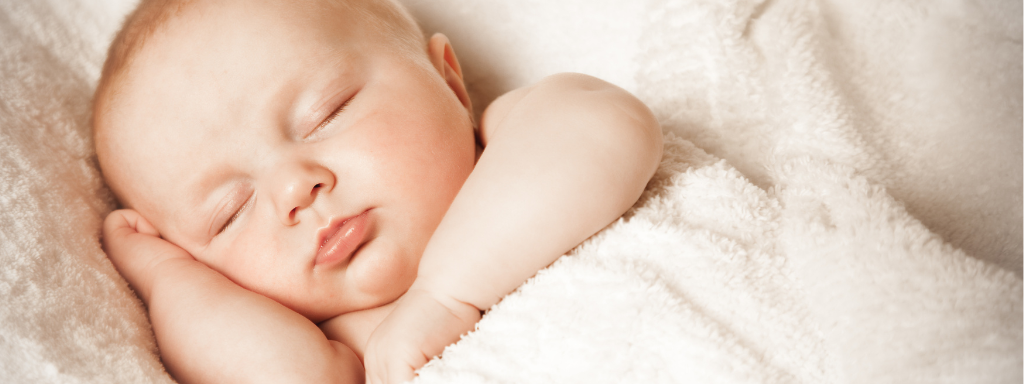We are joined by Catherine Wasley, aka The Parent Rock, who is a certified holistic sleep coach. Read on to learn her tips!
Before we get going, I want to lay my cards on the table. As a holistic sleep coach, I don’t recommend sleep schedules or wake windows. There’s a vast array of plans, charts and apps out there that all claim to have the correct wake windows at every age. At best, they can give a little guidance if you’re struggling to make head or tail of your baby’s sleep, but I’ll tell you the reason why they’re not in my sleep toolkit, and why they shouldn’t be in yours either.
Wake Windows – Fact Or Fiction?
You might think that as they’re so widespread that there is some science behind them, but there isn’t. The truth is they are not evidence-based. And this is where the problem lies. These generic schedules assume that every baby at a particular age will sleep at the same time for the same length of time. So the reality is that they cannot work for EVERY baby because every baby is unique, and sleep needs are fluid. Babies are not robots!
But this doesn’t mean you have to fly by the seat of your pants with your baby’s sleep. Some parents are happy to just go with the flow, with no regularity of naps and bedtimes, but I, for one, cope much better with motherhood with some structure to my days.
So let’s look at how you can create a bespoke holistic sleep schedule for your baby – simply!

How Much Sleep Does Your Baby Need?
Start by totalling the hours they sleep over 24 hours. Include ALL forms of sleep – daytime naps, contact naps, carrier naps, and even the time they spend sleeping while feeding. Now compare the duration of daytime sleep to nighttime sleep.

Refer to the chart above to see if your baby’s sleep aligns with the typical patterns for their age. If there seems to be a sleep deficit, see whether it’s more prominent during the day or at night. One word of caution! There will always be outliers, some babies have lower sleep needs, while others require more sleep than average.
If you find that your baby is getting less sleep than the sleep chart suggests, consider this before jumping into solutions – how is your baby’s general mood? If they are consistently happy and content, it’s highly unlikely that they aren’t getting enough sleep. This naturally leads to the next point.
What Are Your Baby’s Tired Signs?
There are varied ways in which babies communicate their fatigue. For example, becoming less engaged and responsive, a glazed look, rubbing face on your chest and shoulder. However, sometimes so-called tired signs may not actually be tired signs at all! Yawning for example is not necessarily a tired sign. It might be a sign of boredom, it might be a sign of overwhelm, it might be a sign of stress. I know this all sounds rather confusing, but trust me, you’ll soon work it out! Take the time to understand your baby’s unique cues for tiredness. Each baby is different, so being genuinely curious about your baby’s individual signals is key.
Sleep Diary
Keeping a sleep diary to track your baby’s sleep patterns and behaviours can be helpful. Note down timings of naps, bedtimes and morning wake ups, along with their general behaviour and mood before and after each stretch of sleep. Over time, this should help you understand and recognise their unique tired signs better and discover the ideal times for their naps and bedtime.
So now to piece it all together!
Bedtime
Please don’t fall for the traditional 7pm bedtime. There is no set in stone time for bedtime. There is no right time for bedtime. There are so many dependables – age of your baby, your individual circumstances, when their last nap of the day was, etc, etc. Go for a bedtime which suits your family and your baby. If bedtime is too early for your baby then it will potentially go on for AGES as basically your baby just isn’t tired enough, and you’ll both end up frustrated! On the other hand, if bedtime is too late then you’ll have a very cranky dysregulated bundle on your hands!

So Work Backwards. What Time Do You Want To Start The Day?
Bear in mind how much sleep your baby has over night. If the total is say 10 hours (not necessarily in one long stretch – but wouldn’t that be nice?!) and you’d like a 7am wake up then aim for a 9pm bedtime. This may sound late but bear in mind that as your baby grows and daytime naps decrease, the night sleep will increase, resulting in bedtime being brought forward.
Whatever bedtime works for you and your baby, I suggest keeping it consistent, along with the time you get your baby up in the morning. These two times really do help to anchor the day and night for your little one.
What Should Your Baby’s Naps Look Like?
Here’s a VERY rough guide to how long your baby may be awake between naps. Up to the age of 6 months, pay attention to the duration of wakefulness between naps rather than sticking to fixed nap times. During this stage, it’s very normal for naps to vary in length, so respond to your baby’s tired cues.
A Rough Guide To Naps:
• Newborns 0-1 month: Awake intervals are often less than an hour, with 4-5 naps lasting approximately 30 to 60 minutes each.
• 1 to 3 months: Awake intervals typically remain under 1.5 hours, and the number of naps is around 4.
• 3 to 6 months: Awake intervals usually stay under 2 hours, and the number of naps may reduce from 4 to 3.
• 6 months and beyond: A more defined pattern may emerge, with around 3 naps a day (generally morning, lunchtime, and afternoon).
• 7 to 9 months: The afternoon nap may no longer be needed.
• 15 to 18 months: The morning nap is often dropped with just one
lunchtime/ afternoon nap remaining.
With the info you’ve gathered from your sleep diary, you’ll be able to work out nap timings for your baby. And in all honesty, timings are more important than location or length of nap. If your little one stays awake for too long before a nap, they may become irritable and have difficulty settling down. On the other hand, attempting to put them down for a nap before they’re ready could result in resistance.
Additionally, it’s important to ensure that the last nap of the day isn’t too close to bedtime. Insufficient sleep pressure (the drive to fall asleep the longer we are awake) might lead to spending the evening with an energetic little companion!
Please don’t stress about naps. One poorly timed nap might or might not negatively impact your day BUT it most certainly won’t ruin your baby!
Is Your Baby A Catnapper?
And while we’re on the subject of naps just bear in mind that some babies thrive on long naps, while others are natural catnappers, and that suits them just fine! Naps are influenced by a combination of your child’s temperament and their genetic makeup. The truth is, you can’t force your child to nap for a longer duration if that’s not what they need.

Flexibility Is Key
Having a sleep schedule can be helpful but don’t feel you have to stick to it, come what may. Life is unpredictable, and sometimes plans need to change. Don’t let a rigid routine stop you from getting out there and having fun!
The takeaways I have for you are that your focus should be on recognising your baby’s tired cues and being flexible to their changing individual sleep needs. If your baby is not displaying signs of tiredness and is generally happy, there is no need to change a thing – you’re smashing it!
So trust your instincts and remain in tune with your baby’s sleep needs, even if they don’t always match the classic baby sleep textbook! (they probably don’t!)
Thanks To Catherine – The Parent Rock
Catherine Wasley, aka The Parent Rock, is a certified holistic sleep coach (OCN Level 6) who works on a 1:1 basis with parents using gentle yet effective strategies to achieve the sleep goals of the family.
Grab your free copy of ‘Easy Sleep Wins – 10 Simple Tips To Improve Your Little One’s Sleep’, from her website.
Want to get out and about, have fun with your baby or toddler, and meet other parents?
Search Happity to find everything that’s happening for the under-5’s in your local area – from music and singing classes, to messy play, arts and crafts, baby massage, gymnastics and more. Simply enter your postcode and child’s age to search, and then book your spot in a few taps. Enjoy dedicated fun time with your little one, watch their skills develop, and make friends at the same time. Mums, dads, grandparents and carers will all find something to love!
If You Found This Post Useful, You May Also Like:
17 Sounds To Help Your Baby Sleep
An Early Years Expert’s Advice To De-Stress As A Parent
Baby Sleep Issues – 6 Restful Tips For Your Little One (And Where To Find Help)



0 Comments